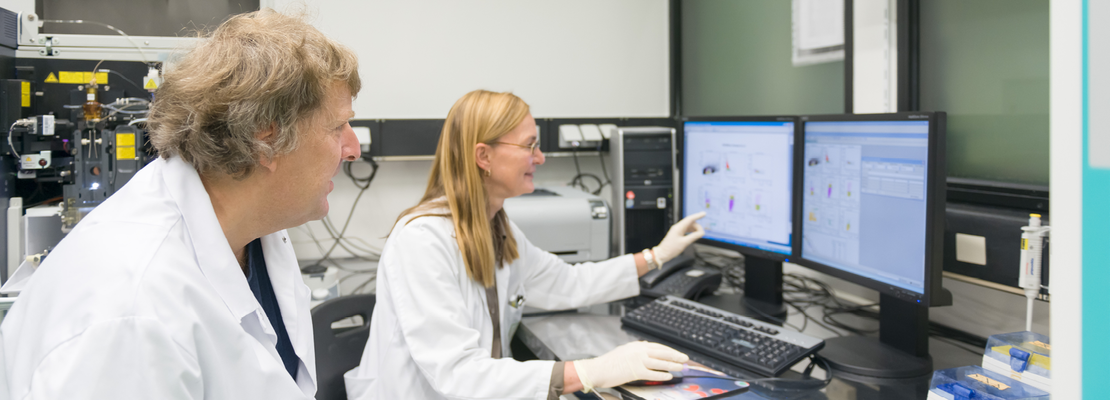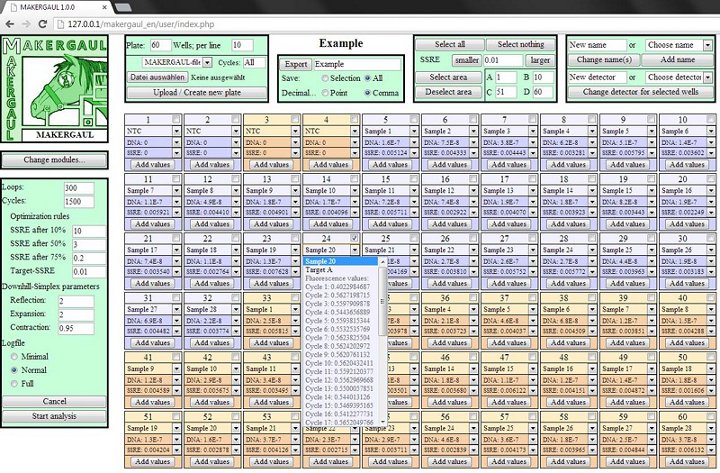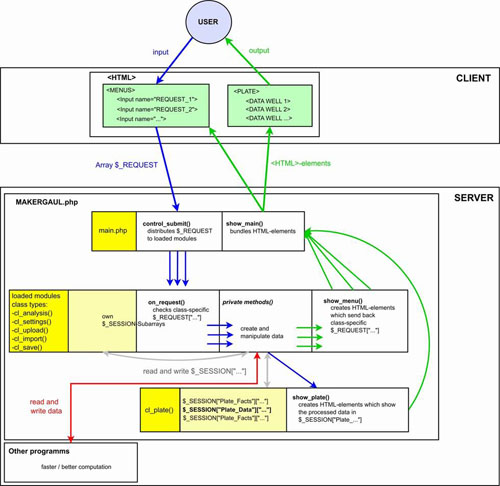Makergaul
A novel model and software for real-time PCR quantification
The complete software is described in detail in: Clin Biochemistry 2014;47, 117-122.
The MAKERGAUL-Model serves to determine DNA concentrations in real-time-PCR experimentation. It is a mechanistically calculation model.
Corresponding authors: C. A. Bultmann, Christoph.Bultmannrwth-aachende and Univ. -Prof. Dr. rer. nat. Ralf Weiskirchen, rweiskirchenukaachende
Program structure
Starting point of the software is the real-time PCR file. It contains the fluorescence data and status information generated by the respective PCR-cycler presented by the panel object. Each function should be represented by a separate object. All function objects should act independently. All functions of the program aim to manipulate data of the disk object. The output of the program is as an HTML page.
Data handling
The storage of data across multiple program invocations is done in global, cross-program variables (session variables).In MAKERGAUL, only the central session variables (see definition later) should be addressed by all disk objects. Session variables, which are additionally required by a functional object, should be initialized in first start()- and unset in the unload()-member function of the object.
In preparing these variables, the object should always form an array, which bears the name of the module and contains all other session variables of the object. Cross-talk between modules over self-initialized session-variables is to avoid. Together, these rules prevent the occurrence of unwanted overlaps and thus errors when loading new modules.Each module must have standardized methods for initialization, input and output, which are called by the main program:
Downloads:
MAKERGAUL - Supplemental Material 3 (ZIP)
MAKERGAUL software including all source codes and configuration files. In this archive, all source codes and compiled programs are given. We strongly recommend reading the "readme.txt" and Supplemental Material 3 files prior installation.
MAKERGAUL analysis model and its implementation as an iterative algorithm. In this summary, all assumptions and examples codes that were used for establishment of the MAKERGAUL algorithm are given.
MAKERGAUL and its components. In this summary, details of the structure, main functions and program handling of MAKERGAUL are given.
Supplemental Material 4 (ZIP) Teil 1 und Teil 2
Raw-data and analysis results obtained with MAKERGAUL and MAKERGAUL_C. In this archive, all excel sheets used in our study are given. These include the original data set of Verheulen et al. (Referenz) and both the MAKERGAUL and MAKERGAUL_C computed data. After extraction, the different examples can be viewed with open office.
Description of the examined performance parameters of MAKERGAUL and MAKERGAUL_C. In this document, details of the performance parameters bias, variability, precision, linearity, and resolution are given for both algorithms.
Data sets used for generation of figures in this manuscript. All data in this supplement is given in a rar file. After extraction, the different examples can be viewed with open office.
Supplemental Material 1-6 (ZIP) Teil 1 und Teil 2
Download all Supplement Materials










